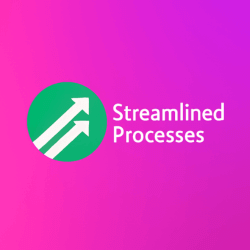For Saas Business Analytics Tools, see our main page here.
What Are Saas Business Analytics Tools?
Saas Business Analytics Tools are cloud-based software platforms that help companies analyze data and make smarter decisions. These tools collect, process, and visualize business data from various sources. As a result, teams can spot trends, track performance, and identify opportunities for growth.
Instead of relying on spreadsheets or on-premise systems, SaaS solutions offer more flexibility. They are hosted online and accessible from anywhere. Moreover, updates and maintenance happen automatically, reducing IT needs on your end.
Why Saas Analytics Is Transforming Business Decision-Making
Historically, businesses depended on internal reporting systems that were often slow and isolated. However, modern Saas Business Analytics Tools have reshaped how organizations use insights across departments.
For example, marketing teams can track campaign performance in real time. Finance departments can forecast budget trends based on live expense data. In other words, every team benefits by making more informed, faster decisions.
Top Features to Look for in Saas Business Analytics Tools
Not all platforms are built the same. When evaluating your options, consider the following features:
- Customizable Dashboards: Design views tailored to user roles or departments.
- Real-Time Data Sync: Immediate access to updated metrics and KPIs.
- Self-Service Reporting: Empower non-technical users to explore data independently.
- Predictive Analytics: Surface forecasts using machine learning models.
- Data Integration: Seamlessly connect CRM, ERP, marketing, and other platforms.
For instance, a sales team might integrate data from HubSpot, Salesforce, and Google Analytics into a single dashboard. This enables unified visibility and quicker decision-making.
Popular Saas Business Analytics Tools and Their Strengths
There are many strong choices on the market. Let’s take a look at a few that stand out for different reasons:
- Tableau Cloud: Known for stunning visuals and deep customization. Business analysts often prefer Tableau for advanced dashboards.
- Looker (by Google): Works well for complex data modeling. It’s especially popular with data engineers and larger teams.
- Power BI (SaaS Version): Microsoft’s cloud version offers deep Office 365 integrations. Ideal for companies already in the Microsoft ecosystem.
- Domo: Offers strong mobile support and real-time alerts. Useful for executives and mobile-first teams.
- Klipfolio: Focuses on small businesses and startups with accessible pricing and easy setup.
These platforms are quite different in approach. For example, Power BI may suit financial reporting, while Klipfolio fits agile marketing teams.
Use Cases for Saas Business Analytics Tools in Different Departments
Saas Business Analytics Tools aren’t limited to data teams. In fact, they empower cross-functional collaboration. Let’s break it down by department:
- Sales: Track targets versus actuals, pipeline velocity, and lead-to-close rates in real time.
- Marketing: Measure multi-channel ROI, customer acquisition costs, and campaign engagement.
- Finance: Analyze operational costs, track P&L trends, and predict future cash flows.
- Operations: Monitor inventory levels, logistics KPIs, and production timelines.
Most importantly, shared dashboards and live data reduce silos and create aligned decision-making.
Trends Shaping the Future of Saas Analytics Systems
Modern analytics systems are increasingly automated and powered by AI. Consequently, insights can now be generated without human intervention. This shift is leading to more responsive and predictive companies.
For example, anomaly detection features can alert users if conversion rates drop. In addition, AI-driven forecasting helps businesses plan inventory more accurately based on seasonality and demand patterns.
Another trend is the rise of embedded analytics. Rather than switching apps, teams can view insights directly within CRMs, chat tools, or email dashboards. This integration improves speed and user adoption.
Challenges When Implementing Saas Business Analytics Tools
Despite their advantages, implementing these tools is not always smooth. Here are common challenges companies face:
- Data Silos: Disconnected systems make it hard to build a full picture.
- User Adoption: Employees resist change or find tools hard to understand.
- Data Quality: Incomplete or inconsistent inputs can skew results.
- Costs: Some platforms charge per user, which adds up quickly in large teams.
To clarify, these obstacles are normal, but with proper planning, they can be minimized. Training sessions and a testing phase often lead to better adoption over time.
Tips for Getting the Most From SaaS Analytics
Before choosing a tool, define your business goals clearly. What do you hope to solve or improve?
Next, map your data sources. Then verify that your preferred tool can integrate with each of them.
Finally, don’t overlook training. Even the most powerful dashboard is useless if nobody knows how to use it confidently.
FAQ: Saas Business Analytics Tools
- Do Saas Business Analytics Tools require coding skills?
Most platforms today are no-code or low-code. Business users can often build dashboards without help from IT. - Can I integrate multiple tools with one analytics dashboard?
Yes, most modern analytics tools support integration with CRMs, marketing software, and finance platforms. - How secure are these platforms?
Leading vendors use enterprise-grade encryption, access controls, and regular audits to ensure your data remains safe. - Are there free versions available?
Some tools, like Google Data Studio, are free. Others offer trial periods or free tiers with limited features.
The Role of Automation and AI in Creating This Article
This article was created with the assistance of AI tools and reviewed by our team at Streamlined Processes LLC to ensure accuracy and relevance. Automation helped outline and organize the key points based on current industry practices. Then, our experts enriched the content with real examples, experience, and up-to-date context.
As a result, you get a well-rounded piece that is both informative and trustworthy.
Follow us on Facebook here.

